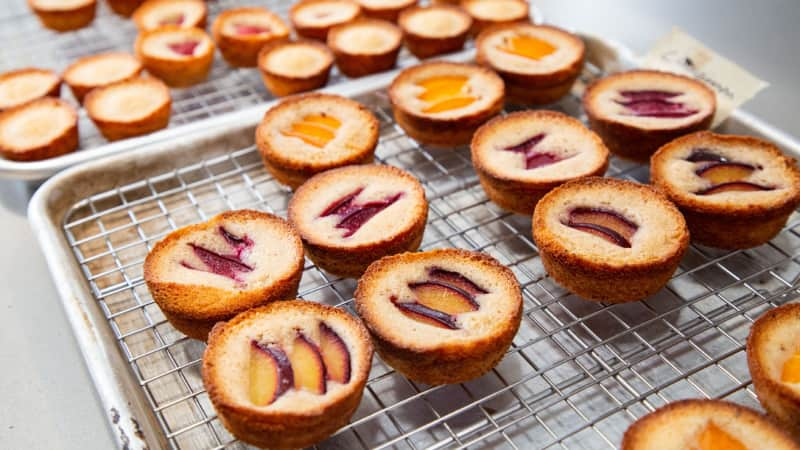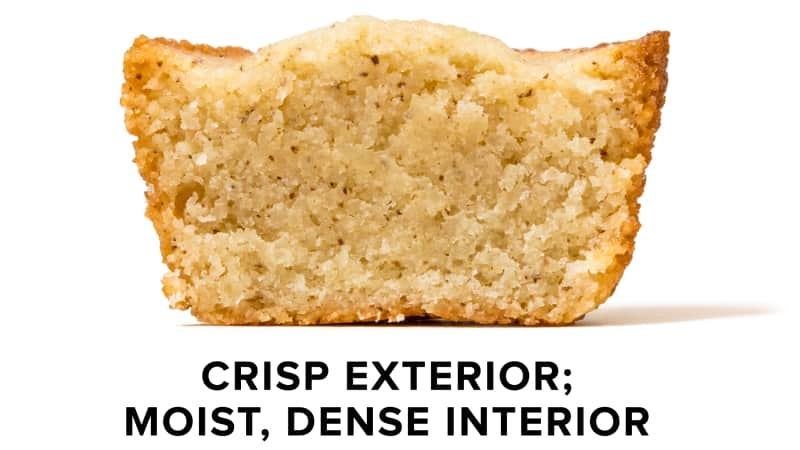My Goals and Discoveries
Coarse, open crumb
Granulated sugar, which is coarse and doesn’t fully dissolve in the egg whites, gives these cakes a rustic, open crumb.
No underdone centers
Reducing the oven temperature allows the mini-muffin tin cakes, which are slightly larger than the traditional type, to bake evenly.
No doming
A spritz of baking spray places a fine coating of flour on the sides of the pan. This flour insulates the sides of the cakes, so they rise at the same rate as the centers.










